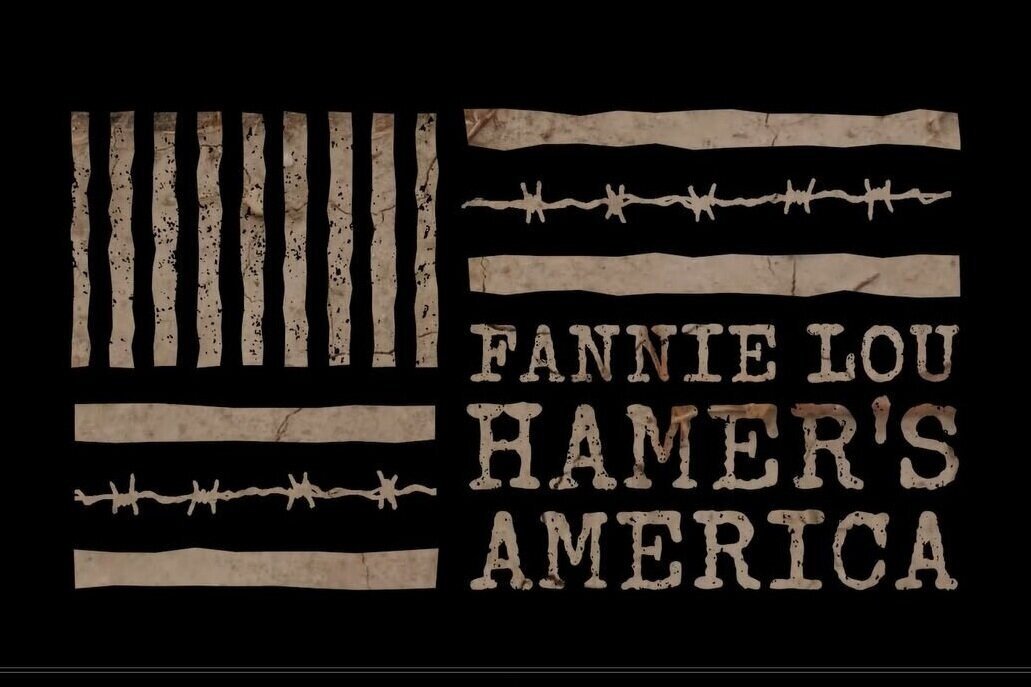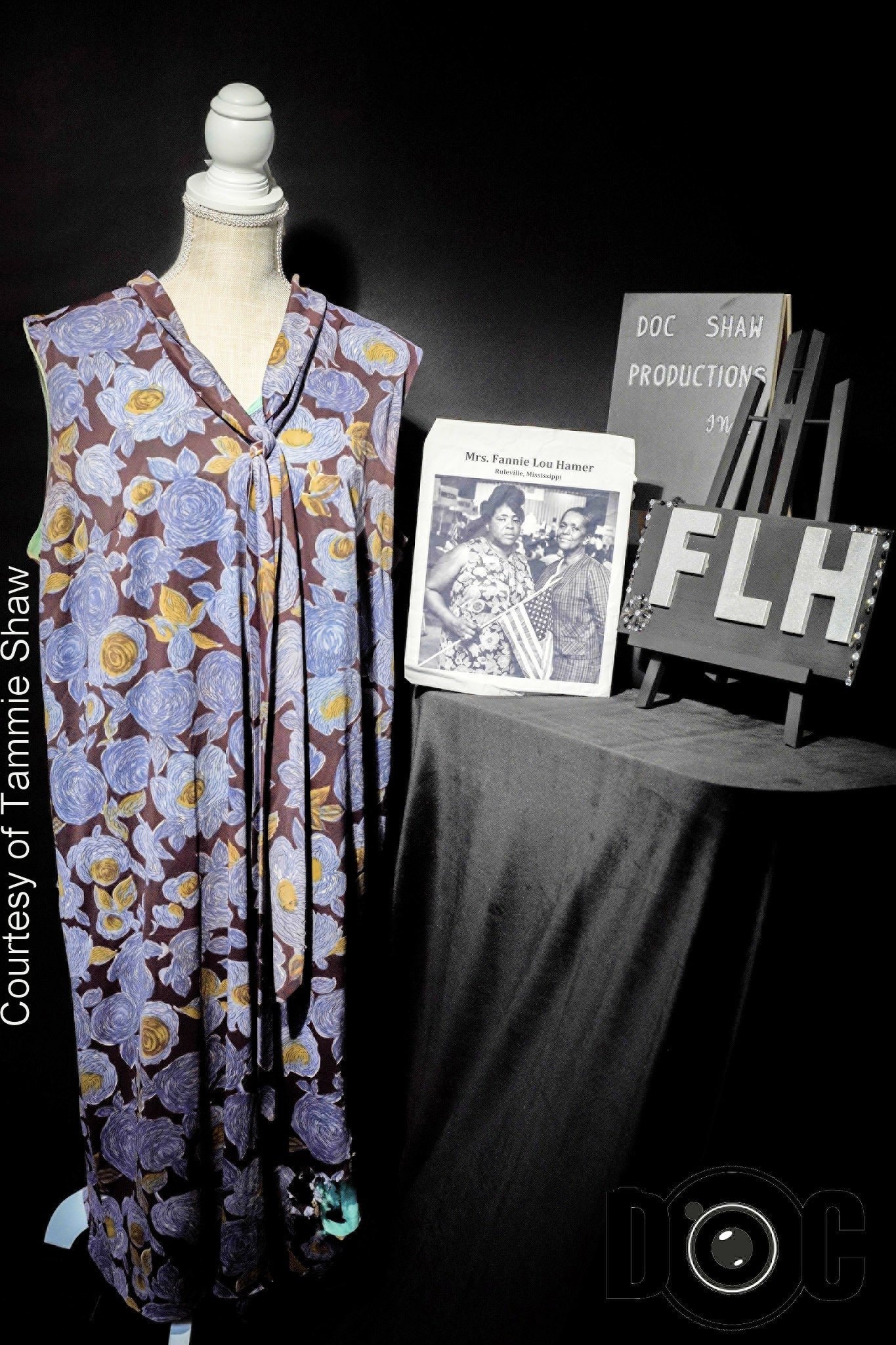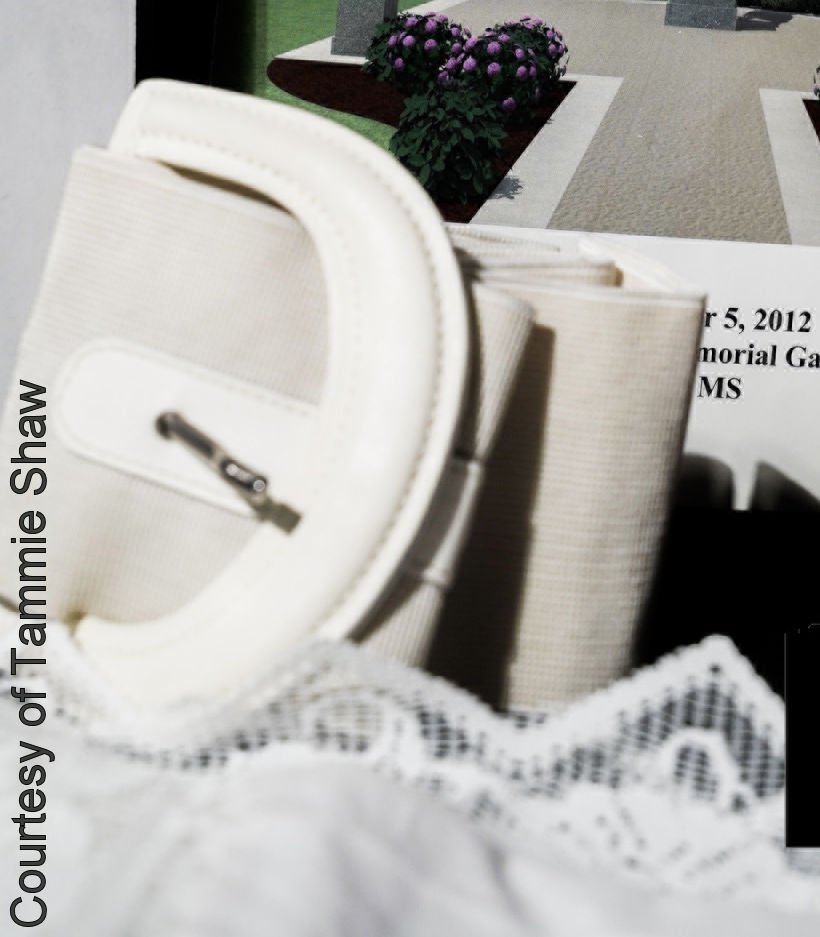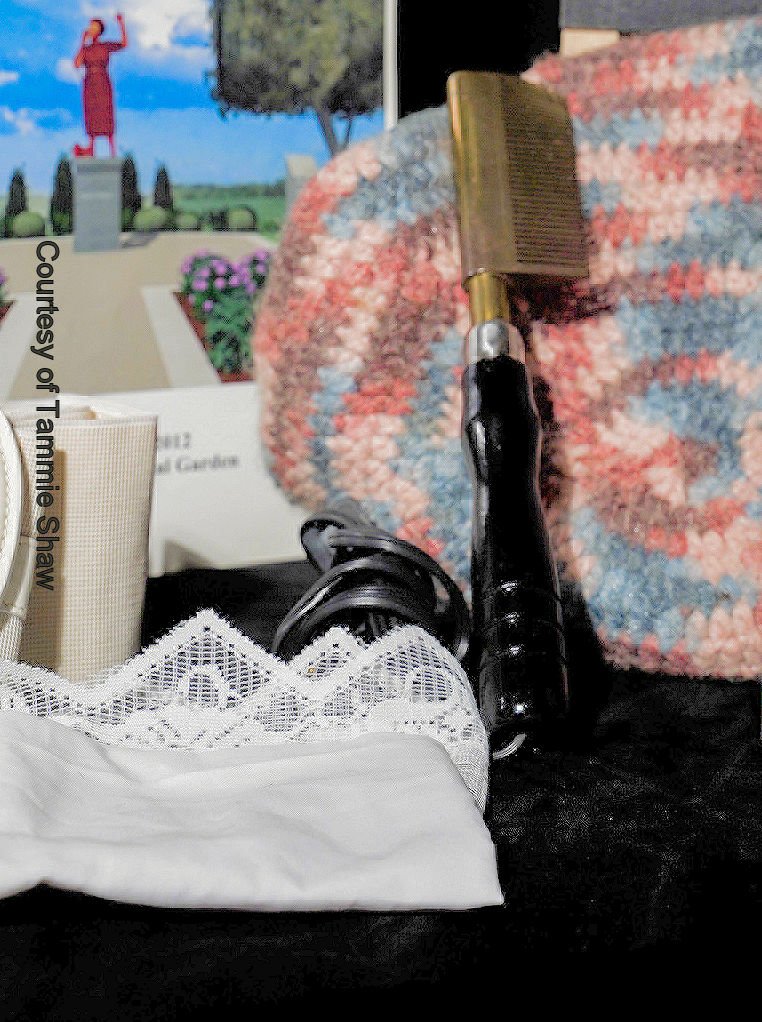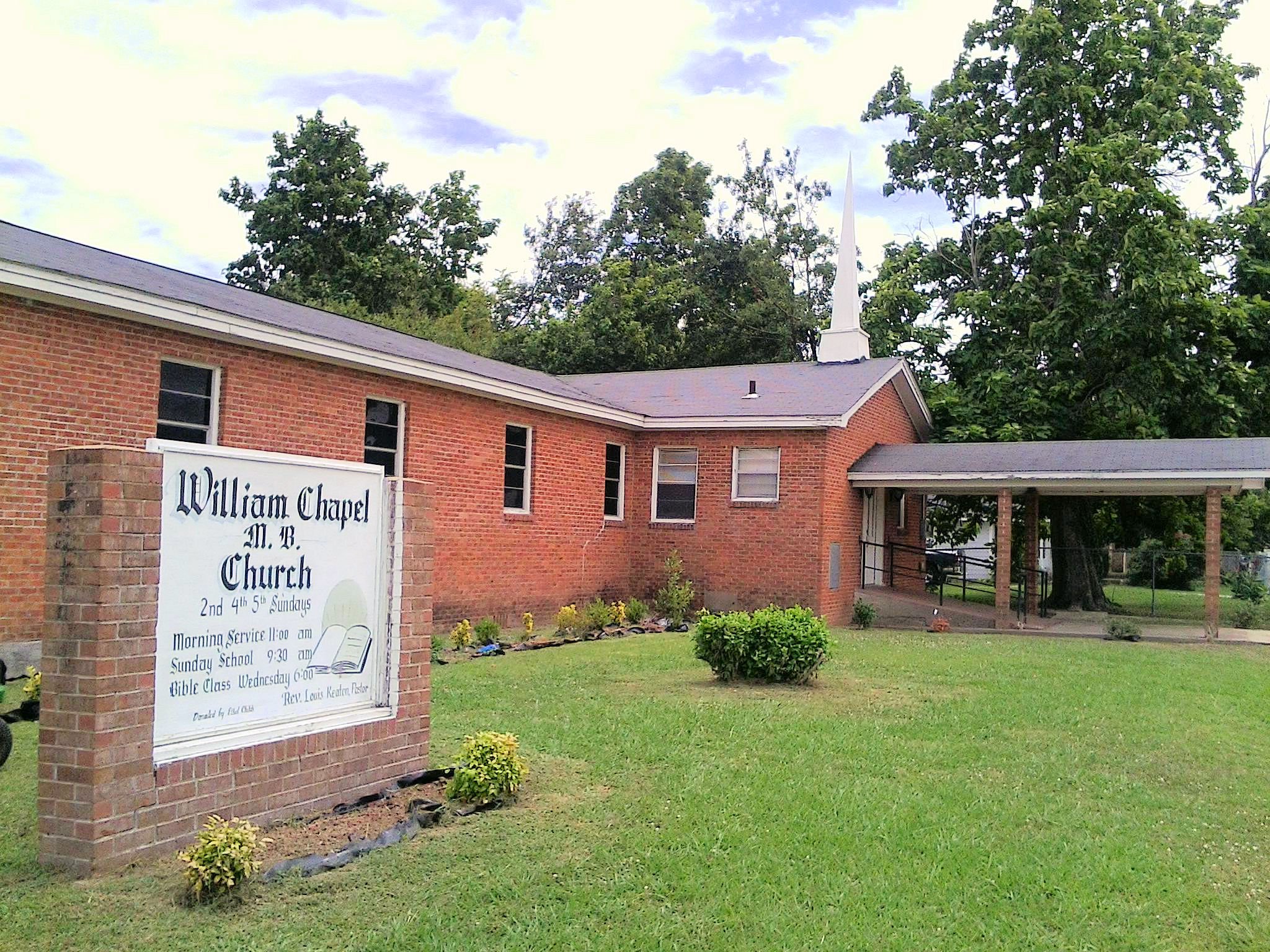
Fannie Lou Hamer Digital Library and Museum
Fannie Lou Hamer, Victoria Gray Adams and Annie Devine read a telegram while at the nation’s capital as members of the Mississippi Freedom Democratic Party (MFDP).
Welcome to our online library and museum dedicated to human rights icon Fannie Lou Hamer! On this page, we will continue to add research materials ranging from her family, her her entry into activism and her humanitarianism. You’ll find research materials on the beating she endured in a Winona jail cell, court documents relating to her arrest, telegrams, personal letters she wrote, the many news paper articles that covered her activities and much, much more!
We’ll dispaly personal items and artifacts either belonging to or relating to Hamer’s work. And we‘ll also provide links to internal and external resource information relating to Fannie Lou Hamer.
If you have materials you would like to share on this page, please email us at flhamerica@gmail.com.
You can also help us pay for our research, photos and copied materials with your tax-deductible donation. Thank you for your support!
Fannie Lou Hamer Library
Birth and Early Life
Born on Saturday, October 6, 1917, Fannie Alma Louise DuBois Townsend was the 20th child of James Lee and Lou Ella Townsend.
Researching Hamer’s early life is fraught with complications, most notably a lack of documentation. Save for the occasional census records, early documentation of her life and the life of her family, beginning in October 1917, is very difficult to locate. As such, researchers don’t know precisely where she was born. After entering civil rights, Hamer often said she was born in Montgomery County, Mississippi, without giving a town or village name. However, during her testimony at a federal trial held in Oxford, Mississippi in December 1963, Hamer said she was born in unincorporated Tomnolen, Mississippi. This is the first and only time Hamer made this claim.
Tomnolen in Webster County, MS borders Montgomery County to the west. Local historians believe Hamer said she was born in Montgomery County because in those days, U.S. Mail was only delivered to the nearest and largest county. And when Fannie Lou, as she was commonly known, was born, that would have been Montgomery County. So, when people were asked where they were from, such as Fannie Lou’s parents, they would name the county where they received their mail. When she was two-years-old, Fannie Lou’s family moved farther west to a plantaion in the Mississippi Delta.
At the age of six, Hamer was tricked into picking cotton by the plantation owner with the promise of getting snacks like Cracker Jacks from his commisary store similar to the abandoned one above right. Hamer describes her experience in the film, Fannie Lou Hamer’s America (right).
First Marriage to Charlie Gray.
Although Fannie Lou never publicly mentioned her first marriage to a man named Charlie Lee Gray, records at the Sunflower County Courthouse in Indianola, MS verify both were Ruleville residents and at the age of 18, she married Gray who was 21. Their marriage license was signed on January 4, 1938. And they were married two days later on January 6. That record was found in the Marriage Records for Colored 1937-1938 housed at the courthouse.
A short time later around 1940, according to a military draft card obtained by historian Kate Clifford Larson, Gray listed his wife, Fannie Lou Gray as his nearest relative. He listed his employer as Mr. J.B. Noble, Mable Plantation in Ruleville. The draft card indicates he was discharged on April 18, 1946.
In his divorce filing, Gray said that he and Fannie Lou lived together until February 1943. He claims because she deserted him. Their divorice was finalized May 2, 1944.
Fannie Lou married Perry “Pap” Hamer in July 1944. No marriage certificate for them was found in Sunflower County. The search continues in neighboring counties. However, some historians suspect that while they may have filed for and obtained a marriage certificate, it was never returned or filed at the courthouse, which was common at that time.
Entry Into Activism.
It was in August 1962, that Fannie Lou Hamer made history. She attended a mass meeting at William Chapel Church in Ruleville after promising her husband she would pick 300 pounds of cotton if he would take her. At that meeting, several members of SNCC Jim Foreman, Reggie Robinson, James Bevel, Bob Moses and Lawrence Guyot explained to those in attendance that they had the legal right to vote. Hamer heard those words and never looked back. (Right: Hamer describes that night in the video)
When they called for volunteers to go to the Sunflower County Courthouse later that week to register to vote, Hamer was among the first to raie her hand.
MORE TO COME!
Fannie Lou Hamer Museum
If you have photos of items you would like to contribute to this page, please contact us at flhamerica@gmail.com. Thank you.
My mother and Mrs. Hamer could wear the same size clothes, but was different in height and shoe sizes. My mother would let Mrs. Hamer borrow dresses for big meetings with the Student Nonviolent Coordinating Committee (SNCC) and the Mississippi Freedom Democratic Party (MFDP) conferences.
My mother let Mrs. Hamer wear this particular dress that she has worn before to different churches. And when the news media took pictures of Mrs. Hamer in this dress and put it on TV and in magazines, people started asking my mother if that was her dress Mrs. Hamer had on. My mother denied the dress, hid it in the bottom of the closet and never wore it again. Mother remembered what her white superintendent had said. She couldn't afford to lose her job with three children and a husband. Mrs. Hamer and my mother would only make signs, talk "Pig Latin" and make gestures about the dress but never verbally discussed it in our presence.
After my mother heard Mrs. Hamer's speech at the Credentials Committee of the Democratic National Convention in Atlantic City, New Jersey on August 22, 1964 on TV, my sister told me that my mother shouted "Thank you Jesus” all day long because she had helped her write the speech early one Saturday morning after they had practiced on some solos. Mother said one of those songs was, "When I've gone the Last Mile of the Way!" But after Mrs. Hamer spoke to the DNC, mother said, "Fannie Lou loved to sing, May the Work I've Done Speak for Me. She spoke ya'll!!"
After the Civil Rights Act of 1964 was passed and the Voting Rights Act of 1965 was passed, the Blacks in Ruleville were convinced of the song that Mrs. Fannie Lou Hamer was singing, "There's A Brighter Day Ahead!" In the late 1960s, the Sunflower County School District had a new superintendent, Herbert Hargett, and the tension in our house had a 360 degree turn around. Mrs. Fannie Lou and my mother sung even louder! They would wake me up singing.
Mrs. Hamer would look out for my mother. She provided food for us and clothes for us because she knew Black school teachers didn't make a lot of money. Mrs. Hamer was hired as the field secretary for SNCC (Student Non-Violent Coordinating Committee). Mrs. Hamer talked to my mother one night in 1965, and told her that she had recommended her to help with plans for a Head Start Program in Ruleville - to help our children learn. My mother had to go to Chicago, Illinois for training at Chicago State College (now Chicago State University).
In 1967, Mrs. Hamer's husband, "Mr. Pap" would pick me up from home and carry me to the Head Start Center at William Chapel M.B. Church. That program helped my mother with not having to pay a baby sitter and helped me with an early start in education.
I remember in September of 1974, when my sister turned 18 years of age, Mrs. Hamer came by the house early that morning and said "Letha, send them children out of that house, we're going to register to vote. My sister and brother came out of the house, jumped off the porch, ran and got into the car with Mrs. Fannie Lou.
The last project I remember my mother working on was when she helped organized the Fannie Lou Hamer Day on Sunday, October 31, 1976 held at the Ruleville Central High School Gymnasium. That was a great day for Mrs. Fannie Lou Hamer. Those were time when the "village" helped to raise the children!
Letha Mae Sanders Barber (left) and Fannie Lou Townsend Hamer are both gone now, but ‘Walking The Milky White way!’” - As told by Tammie S. Barber Shaw
Fannie Lou Hamer’s Dress and Jewelry Box
Photos and story courtesy of Tammie S. Barber Shaw.
Materials donated by her mother, Mrs. Letha Mae Sanders Barber
“My mother met the renowned Mrs. Fannie Lou Hamer when she began playing for Williams Chapel Missionary Baptist Church in the 1950's. Mother was hired as the pianist. She accompanied Mrs. Hamer when she led songs in the William Chapel Missionary Baptist Church choir and when she sung solos in the community churches. They became the best of friends and remained friends even after Mrs. Hamer's death because "Fannie Lou's" name ranged in mother's mouth for years. Even though, Mrs. Hamer, was also 17 years older than my mother, they acted more like sisters. When Mrs. Hamer didn't call her "Letha", she called her "Baby Sis."
My mother told me that when I was about 2 months old, some KKK members fired many shots in one of the members of William Chapel M.B. Church house to try and kill Mrs. Fannie Lou for trying to register to vote. The members were Bro. Joe and Sis. Mary Tucker. She said the her, my father and others had already helped Mrs. Hamer to get out town.
My mother was a teacher in the Sunflower County School District during the 1960's and the white superintendent called all of the colored school teachers in and told them if he heard tell of them working with these so called "Freedom Rides" in any way, they would lose their jobs on the spot! My mother was afraid, so told Mrs. Hamer when she came back to town and she understood. Most of their public associations were in the churches. See at that time in the Ruleville area, there were many blacks carrying back information to the plantation owners and the police about the Voter Rights meetings. Many couldn't write but they could tell!
When Mrs. Hamer needed to practice on a song, they would stay and practice after church in the choir stands or my mother would go and pick her up later on Friday nights because we had a piano at home. My mother and Mrs. Hamer would sing Zion Song til up in the wee hours of the night. Then my mother would drive her back home before daybreak Saturday morning.”
“My mother Letha Mae Sanders Barber was born in Ruleville, MS, on September 12, 1934, to the late Will and Sarah Gertrude King Sanders at 510 East Street (renamed East Sanders Lane).
Letha Mae (“Baby Sis” as many called her) was Ruleville's greatest Black historian. Her mother (Sarah G. K. Sanders) opened the first Black kindergarten in the Ruleville area. The G. K. stood for Gertrude King and Great Kindergarten. Sarah was a pianist and she taught my mother, Letha Mae, how to play the piano. At the age of 17, my mother was playing for churches in the Delta areas (Ruleville, Cleveland, Doddsville, Dockery, Drew, etc.) to help pay for her college education. She played in cities, towns and on plantations.”
Tammie Barber Shaw (left) and Shaw and her son Doc Shaw. All photos were taken by Doc Shaw Productions. Contact: tammiesshaw@gmail.com
